Unexpected Ways to Ease Endometriosis Pain
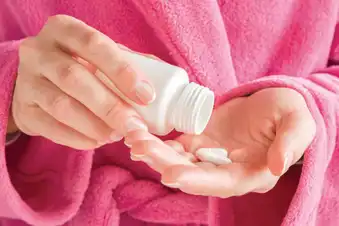
Take Pain Relievers in Advance
Some painkillers work best if you take them before your pain is severe. Ask your doctor if non-steroidal anti-inflammatory drugs (NSAIDs) like ibuprofen or naproxen are an option for you. You can take them up to 24 hours before you expect menstrual pain to start. They block your body from making chemicals that cause inflammation. You can take NSAIDs regularly until your period or ovulation ends. Check the label so you don’t overdo it.
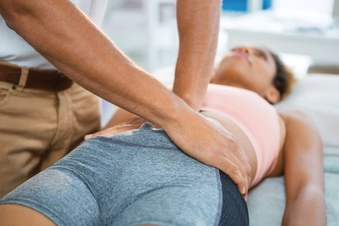
Do Physical Therapy
PT isn’t just for rehabbing sports injuries or after an accident. Endometriosis can affect the way your pelvis and abdomen work, which can cause more pain. A pelvic or women’s health physical therapist can come up with a plan to help get those areas working right again.

Get Up and Moving
It’s understandable if you feel like lying on the couch when you’re hurting. But regular exercise can help you feel better. It doesn’t have to be extreme. Walking, stretching, and doing breathing exercises can all help ease your endometriosis pain.
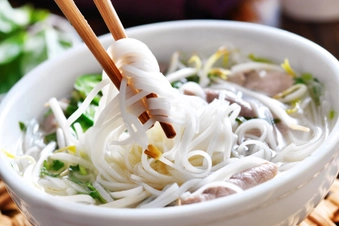
Go Gluten-Free?
Some women who switch to a gluten-free diet feel less endometriosis pain. But it doesn’t work for everyone. Try cutting wheat from your diet for a few months to see how you feel. Instead of regular pasta, eat rice noodles or corn pasta. Replace wheat-based foods with rice, buckwheat, and lentils. After a month or two, you can try wheat again. If pain and bloating get worse, go back to a gluten-free diet. Talk to your doctor before you do.

Do Pelvic Floor Exercises
Endometriosis affects your pelvic floor muscles, and when they don’t work right, you can have even more pain. Pelvic floor exercises can strengthen the muscles and help you feel better.
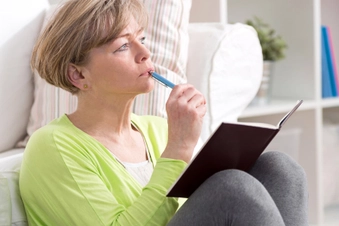
Keep It in Perspective
It can be tough to face an ongoing disease, and some ways of handling it are healthier than others. It’s better to focus on the problem and what you can do about it rather than your emotions and how those feelings make you want to act. For example, when you’re in pain, think about what you can do to feel better instead of how bad it makes you feel. This can reduce stress and depression and help your body feel better.
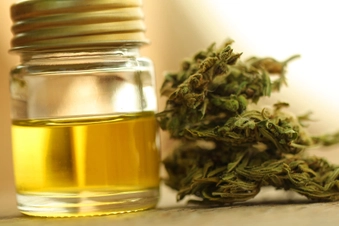
Could CBD Oil Help?
Cannabidiol (CBD) is one of two key molecules in marijuana. The other one, THC, gets you high, while CBD doesn't. Research suggests CBD can help with pain and inflammation. While there isn’t much research on CBD and endometriosis specifically, some women say taking CBD oil helps ease their pain. If you want to try it, be sure to check with your doctor about getting CBD oil from a safe and legal source.
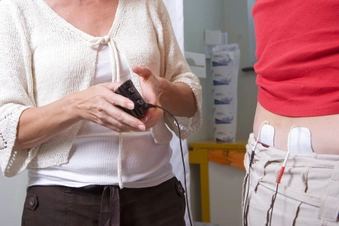
Try TENS
Transcutaneous electrical nerve stimulation (TENS) is a therapy that uses mild electric currents to treat pain. The currents hit your nerves and stop them from sending pain signals to your brain. Ask your doctor if TENS therapy would be a good addition to your treatment plan.
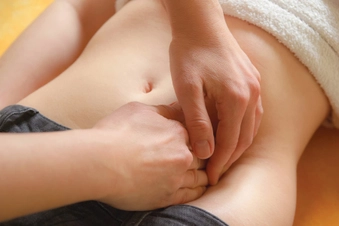
Relax With a Massage
A spa day might be just what the doctor ordered. A back or abdomen massage can help ease your menstrual pain, both right after the massage and even more in the weeks after. Massages can help you beat stress, too.
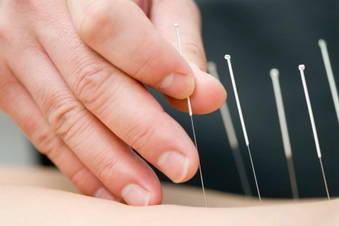
Tap Into Acupuncture
This traditional Chinese medicine practice uses very thin needles to stimulate nerves and muscles. It is thought to release natural painkillers in your body, and research shows that acupuncture can help curb endometriosis pain.

Sprinkle on Cinnamon
This spice could counter inflammation and may lower a hormone in your body that causes discomfort during your period. It’s not clear if it works for endometriosis pain, but in an Italian study, about a teaspoon helped some women with their menstrual pain. If you like the taste, it’s a safe and natural option to try on food or in a drink.

Botox Perk?
Botulinum toxin (Botox) isn’t just for smoothing wrinkles on your face. Because it relaxes the muscles that it’s injected into, doctors use it to treat things like cerebral palsy, migraine, bladder problems, and eye twitching. A small study also found that it lessened pelvic pain and spasms for women with endometriosis. Though this sounds promising, more research is needed before it can become an approved treatment.

Don’t Skip Your Morning Coffee
A few studies have looked at a possible link between drinking coffee or caffeine and endometriosis. There doesn’t seem to be a link between the two, so if your daily routine includes a cup of joe, there’s no need to change that. It might even play a role in lowering your chances of getting endometrial cancer.
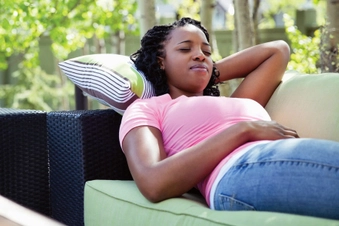
Take a Nap
Many women with endometriosis feel tired a lot. Try to keep a consistent sleep schedule and listen to your body. If you need a nap, take one. One study found that a short mid-afternoon nap in the days right before your period can boost your mood and make you more alert.
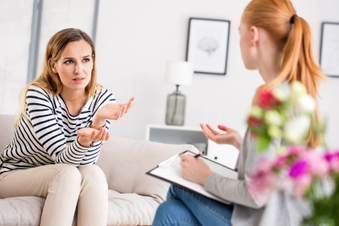
Talk to a Counselor
The physical pain of endometriosis can also affect your emotions as you adjust to life with the condition. Make time to take care of your mental health. Meet with a wise friend, counselor, or psychologist to get support. It helps to talk through what it looks like to live with an ongoing disease.
Show Sources
IMAGES PROVIDED BY:
1) FotoDuets / Thinkstock
2) Wavebreakmedia / Thinkstock
3) disqis / Thinkstock
4) rez-art / Thinkstock
5) MangoStar_Studio / Thinkstock
6) KatarzynaBialasiewicz / Thinkstock
7) OlegMalyshev / Getty Images
8) Richard Hanson / Medical Images
9) ViduGunaratna / Thinkstock
10) Zilli / Thinkstock
11) ligora / Thinkstock
12) Steve Horrell / Science Source
13) DragonImages / Thinkstock
14) Sidekick / Thinkstock
15) KatarzynaBialasiewicz / Thinkstock
SOURCES:
Endometriosis.org: “Painkillers,” “Five things that pelvic health physical therapy can do to improve your endometriosis-related pain,” “Dietary modification to alleviate endometriosis symptoms.”
Journal of Physical Therapy Science: “Efficacy of exercise on pelvic pain and posture associated with endometriosis: within subject design.”
Minerva Chirurgica: “Gluten-free diet: a new strategy for management of painful endometriosis related symptoms?”
Einstein: “Patients with endometriosis using positive coping strategies have less depression, stress and pelvic pain
Patients with endometriosis using positive coping strategies have less depression, stress and pelvic painPatients with endometriosis using positive coping strategies have less depression, stress and pelvic pain.”
Journal of Behavioral Medicine: “The association of coping to physical and psychological health outcomes: a meta-analytic review.”
Molecules: “Cannabinoid Delivery Systems for Pain and Inflammation Treatment.”
Endometriosis Foundation of America: “CBD Oil for Endometriosis Pain? Experts Warn: Buyer Beware.”
Cleveland Clinic: “Transcutaneous Electrical Nerve Stimulation (TENS).”
European Journal of Obstetrics, Gynecology and Reproductive Biology: “Effectiveness of complementary pain treatment for women with deep endometriosis through Transcutaneous Electrical Nerve Stimulation (TENS): randomized controlled trial.”
Iranian Journal of Nursing and Midwifery Research: “The effects of massage therapy on dysmenorrhea caused by endometriosis.”
Autonomic Neuroscience: “Physiological responses to touch massage in healthy volunteers.”
Mayo Clinic: “Acupuncture,” “Botox injections.”
PLOS ONE: “Effects of acupuncture for the treatment of endometriosis-related pain: A systematic review and meta-analysis.”
Pharmaceutical Biology: “Anti-inflammatory activities of essential oils and their constituents from different provenances of indigenous cinnamon (Cinnamomum osmophloeum) leaves.”
International Research Journal of Pharmacy: “Complementary and Alternative Medicine (CAM) Therapies for Management of Pain Related to Endometriosis.”
Patients with endometriosis using positive coping strategies have less depression, stress and pelvic painJournal of Clinical and Diagnostic Research: “Comparative Effect of Cinnamon and Ibuprofen for Treatment of Primary Dysmenorrhea: A Randomized Double-Blind Clinical Trial.”
Neurology: “Botulinum Toxin Treatment of Chronic Pelvic Pain in Women with Endometriosis.”
European Journal of Nutrition: “Coffee and caffeine intake and risk of endometriosis: a meta-analysis.”
Nutrients: “Caffeinated Coffee, Decaffeinated Coffee and Endometrial Cancer Risk: A Prospective Cohort Study among US Postmenopausal Women.”
Human Reproduction: “Fatigue – a symptom in endometriosis.”
Sleep and Biological Rhythms: “Napping during the late‐luteal phase improves sleepiness, alertness, mood and cognitive performance in women with and without premenstrual symptoms.”
International Journal of Women’s Health: “Anxiety and depression in patients with endometriosis: impact and management challenges.”